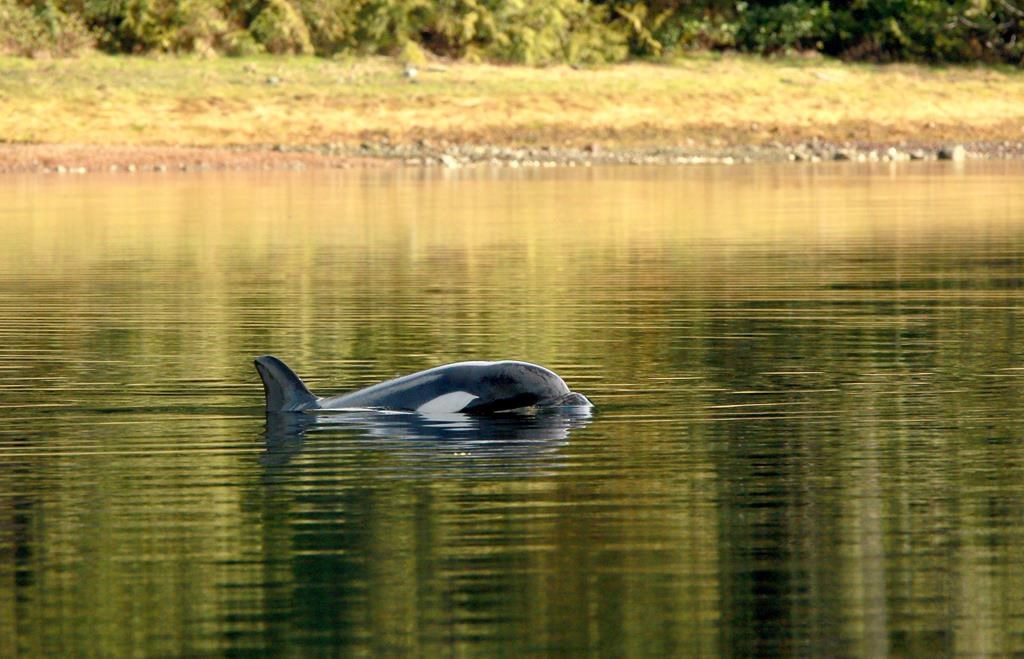Bungee-like nerve in some whales allows them to open wide to feed: scientists
Posted May 4, 2015 1:46 pm.
Last Updated May 4, 2015 7:13 pm.
This article is more than 5 years old.
VANCOUVER – It takes just a few seconds for certain whales to open their gigantic mouths and capture a volume of water and food equal to their body weight before they spew out the liquid, a new study says.
Researchers at the University of British Columbia have discovered a nerve structure inside the mouths and tongues of the world’s largest whales.
They say the nerve can double in length and recoil back like a bungee cord.
Prof. Wayne Vogl, in the Department of Cellular and Physiological Sciences within UBC’s Faculty of Medicine, made the discovery with a crew of researchers at a commercial whaling station in Iceland.
“It stretches more than double its length. For a nerve it is absolutely remarkable,” said Vogl, who noted that the most common type of nerve injury in humans is a stretched nerve.
The researchers found that the nerve of some whales, such as the blue, humpback and minke, is folded and encased in an elastic-like cord. When the whale does a feeding dive the nerve expands as the mouth and blubber balloon to take in fish or krill.
The volume of water taken in by the lunge-feeding whale can exceed the volume of the whale itself, said the findings reported Monday in the scientific journal Current Biology.
When the whale starts to feed, it opens its jaw wide as the mouth and blubber layer swell almost back to the naval to take in the catch along with water. The water is then strained out through the mouth and the food is retained.
“The tissue, the tongue or the overlying blubber and skin, when they expand, what happens is these nerves actually stretch like bungee cords, Vogl said.
“If you think about that, there has to be a lot of things that are different related to their mouth and their oral cavity and their swallowing mechanism that has to be different than in normal vertebrates.”
The researchers travelled to the whaling station in Iceland over a few years and examined seven whales.
Vogl said they spotted the stretched nerve by accident after the first year, and in the second year they started working on the measurements and science behind the discovery.
While whales have been hunted for centuries, Vogl said it’s been difficult to study them.
“You can only see them when they’re dead,” he said, adding their size makes research very challenging.
“If the heart rolls over on you it could kill you,” he said. “Just think about a whale on the beach and trying to get in to look at a lung.”










